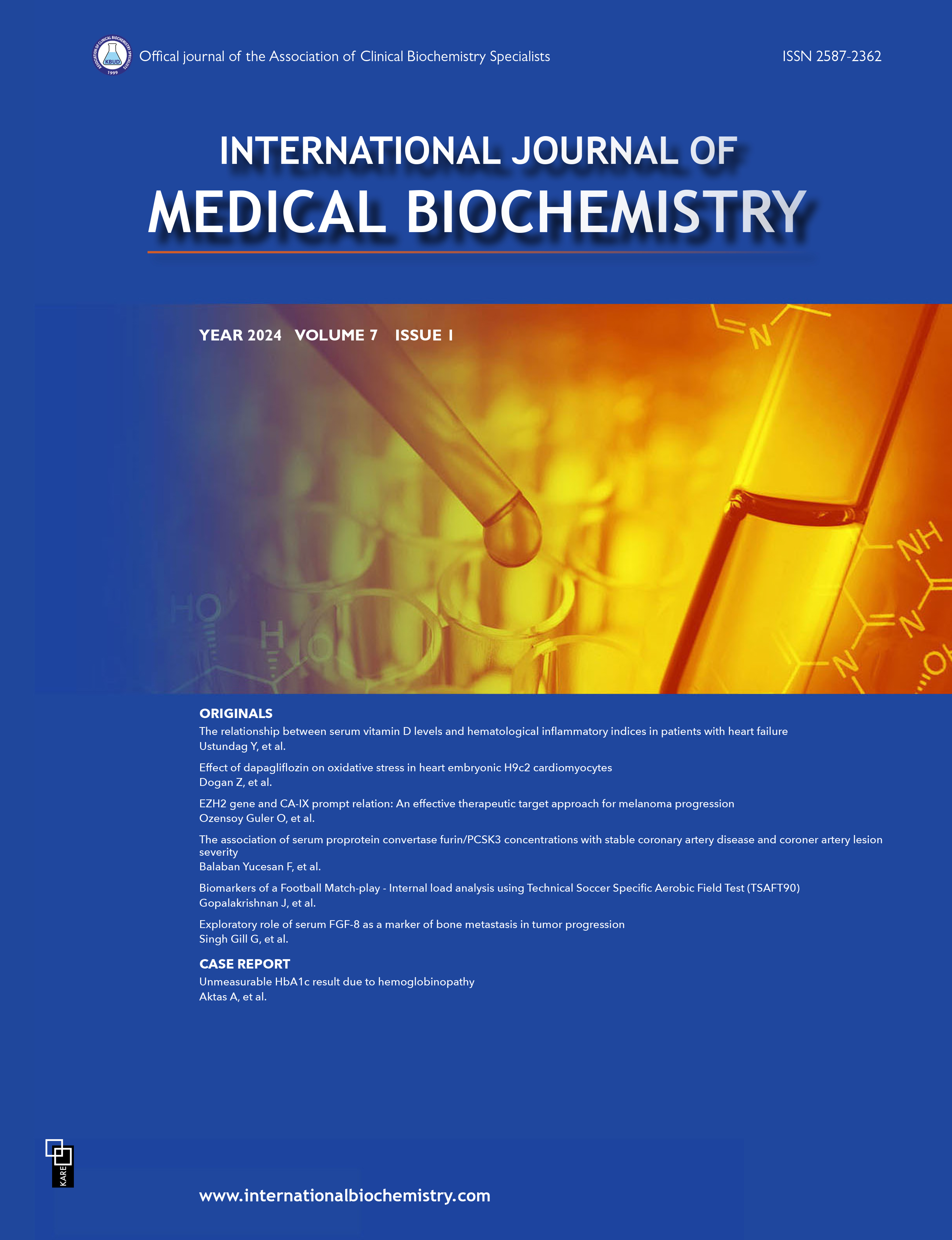Visfatin: A potential biomarker for the early diagnosis and monitoring of acute coronary syndrome
Yesim Guvenc1, Serap Cuhadar2, Ozgur Bayturan3, Cevval Ulman1, Gonul Dinc Horasan4, Ozan Utuk3, Mahmut Acar31Department of Medical Biochemistry, Manisa Celal Bayar University Faculty of Medicine, Manisa, Turkey2Department of Clinical Biochemistry, Ataturk Training And Research Hospital, Izmir, Turkey
3Department of Cardiology, Manisa Celal Bayar University Faculty Of Medicine, Manisa, Turkey
4Department of Public Health, Manisa Celal Bayar University Faculty Of Medicine, Manisa, Turkey
INTRODUCTION: Acute coronary syndrome (ACS) is a major cause of mortality and morbidity worldwide; thus, early diagnosis is very important. The most common cause of ACS is the rupture of a vulnerable atherosclerotic plaque in the coronary artery, an occurrence in which inflammation plays a key role. The aim of the present study was to investigate visfatin as a proinflammatory biomarker in the early diagnosis and monitoring of ACS and to compare visfatins relationship with troponin T, tumor necrosis factor-alpha (TNF-α), and creatine kinase-MB (CK-MB).
METHODS: Sixty ACS patients and 30 healthy control subjects were enrolled in this study. One blood sample was drawn from the control participants, and 3 were obtained from the ACS patients at intervals 0-6 hours (T0), 6-12 hours (T1), and 12-24 (T2) hours from the start of chest pain. Serum visfatin, TNF-α, troponin T, and CK-MB levels were assessed. Visfatin and TNF-α levels were assessed using enzyme-linked immunosorbent assay testing, troponin T was evaluated using chemiluminescence, and CK-MB by enzymatic methods.
RESULTS: Serum TNF-α, troponin T, and CK-MB levels in the T0 blood samples were statistically significantly higher in the ACS patients compared with the controls (p=0.004, p<0.001, p<0.001, respectively). A significant positive correlation was observed between visfatin and troponin T (r=0.290, p=0.007) in the T0 samples. Visfatin concentrations were lower in the ACS group in the T0, T1 and T2 samples [4.01±6.23ng/mL, 1.80±3.47 ng/mL, and 1.72±2.67ng/mL, respectively; p=0.005; T0 >(T1=T2)].
DISCUSSION AND CONCLUSION: Visfatin had a significant positive correlation with troponin T. Visfatin did not demonstrate a rise and fall pattern like the standard biomarkers in terms of monitoring the progress of ACS patients, as there was a significant decrease after the first 6 hours. Although visfatin did not demonstrate superiority to troponin, its efficiency in a multimarker panel merits further evaluation. The role of visfatin in the early phase of pathophysiological mechanisms requires additional investigation.
Corresponding Author: Yesim Guvenc, Türkiye
Manuscript Language: English



















